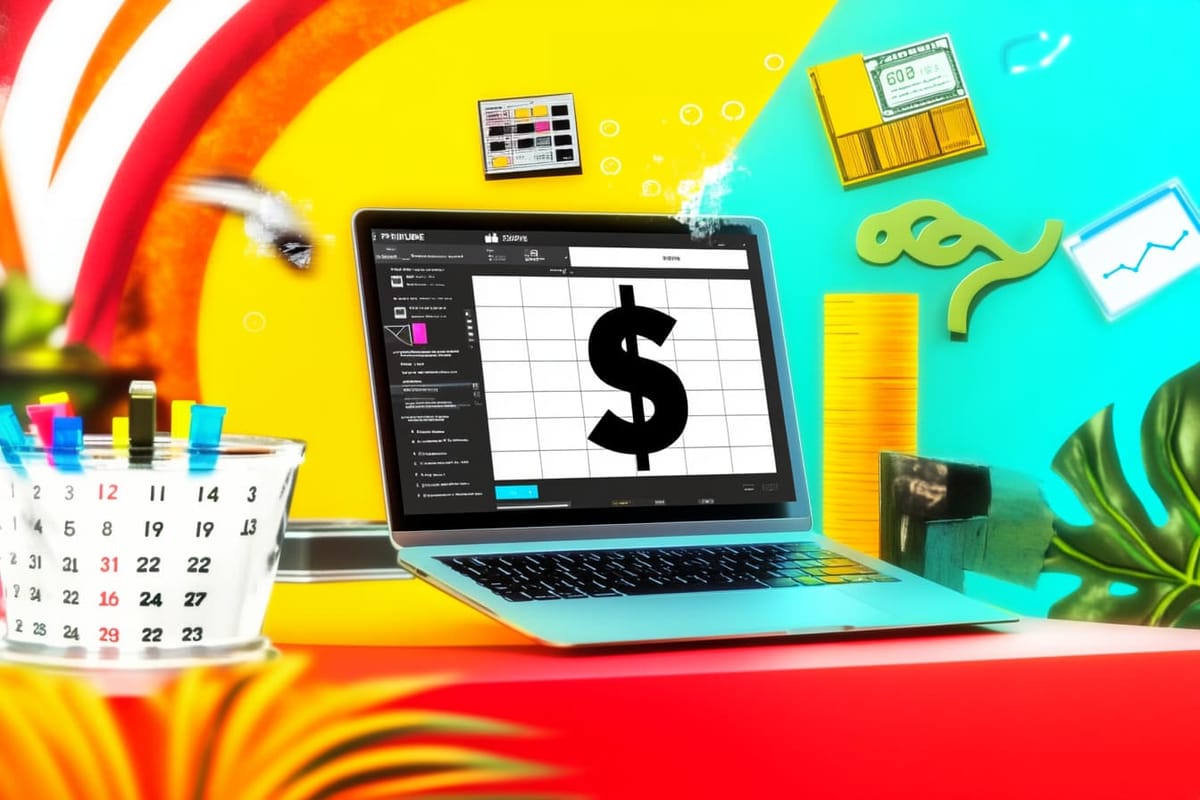Why You Should Invest In Tools as a Solopreneur
Lack of tools can hurt your business.

Many solopreneurs try to keep their expenses really low. Understandably so, especially when you're first starting out and don't have a lot of income. Every monthly subscription is another commitment (even though many of them are easy to cancel) and expenses impact your overall profit margin: how much you earn compared to your expenses.
However, if you don't invest some money back into your business, two things can happen. First, you might end up doing more work because you're doing things manually instead of letting apps and tools make work easier. Second, it might make for a worse client experience, either because it's harder to collaborate or because you make mistakes doing everything manually.
Digging into these two things a bit more — your experience and your client's experience — it can hurt your business if you don't incorporate technology into your work.
How a lack of technology impacts your work
When you're a solopreneur, your time is literally money. Your clients are paying you for a deliverable, but you have to factor in all the other time you spend on your business.
Let's say a client deliverable takes you 20 hours. But on top of that, you need to plan your week, promote yourself on social media, and send invoices for the month. You could do all of these things manually, but —
- It's harder to plan your bandwidth without a project management tool that gives you a clear view of all your work
- A lot of social media platforms' built-in scheduling tools are clunky (or you can't schedule at all, and it's harder to maintain a consistent online presence)
- Without accounting software, you'll spend a lot of time figuring out your income and expenses when it's time to file your tax return
All of these things cost you valuable time. At the very least, you could save hours of time every month by using apps and tools that make your work easier. At best, you can put tools to work for you by using automation and integrations.
Automation happens within a tool. Let's say you're using a project management tool, and every time you add a new project, the tool automatically adds a checklist of tasks you need to complete. That saves you time every time you add a new project (same with features like templates).
Integrations are connections between tools. For example, my project management tool (Trello) is integrated with Google Calendar, meaning I can see my Trello projects alongside meetings and other things I have scheduled. This integration saves me time because I don't have to check two different tools to see what I have going on each day.
Integrations can also do things like move data from one tool to another, like if you add a new client to your project management tool, it adds the client to your accounting software. Not only is this saving you time, but it eliminates mistakes you might make if you do that work manually.
Sometimes, a tool you love may not have the best automation or integration. If that's the case, you can use third-party tools like Zapier [affiliate link], Make, or IFTTT to make automated actions happen. These tools definitely have a bit of a learning curve, but they can save you a ton of time. I've been using Zapier for years, and it saves me hours of time every single week.
Here's a tutorial on how to use automation to help you create LinkedIn carousels.
How a lack of technology impacts your client
Skimping on tools doesn't only impact your work experience; it impacts your clients as well.
Sure, you can email back and forth with clients to find a time to meet. Or, you can use a scheduling tool like Calendly, Cal.com, or SavvyCal and save everyone some time.
There's perceived professionalism when you use tools. When I first started freelancing years ago, I sent my clients an invoice that I created in a Google Sheet. It worked, but it didn't look all that great. Plus, collecting payments was tricky. Invoicing tools and accounting software have payments embedded into the invoice itself, so your customers can click a button and pay via a credit card or bank transfer.
You'll also impress clients when you have a clear process, such as a project management tool or collaboration tool that makes it easy to work together.
In some cases, your use of tools may not be client-facing, but they still have an impact on your clients. My use of Trello for project management is mostly internal. I've only had a few instances of creating a shared board to collaborate with clients. However, by using project management, I serve all of my clients better, because I can keep track of deliverables and make sure I meet all of my deadlines.

How to calculate the real cost of a tool
If you're new to running your own business, you might look at all of the tools you could be using, and the cost adds up fast. At this point, now more than four years into freelancing, I use 29 different tools. Some are free, but most of them are paid, which adds up to hundreds of dollars per month.
But here's how to think about the cost of a tool:
- Calculate how much you earn per hour. Start with your total monthly earnings and divide by the total number of hours you spend on your business — not just directly on client work, but any time spent marketing yourself or doing administrative work
- Estimate how much time the tool will save you per month
- Compare the cost of the tool to your effective hourly rate
Here's an example: a standard subscription to Calendly is $10/month. Let's say you earn $40/hour. As long as Calendly saves you at least 15 minutes of time per month, the tool has paid for itself. You can put that banked time toward something more meaningful for your business, such as additional client work or time spent marketing yourself.
Start with free tools
Of course, my example of paying $10/month for a tool can quickly add up. Even if you save time, it may not directly turn into more revenue for your business if you're having a hard time finding clients.
Many tools have free plans, so that's a good place to start. Free plans often have limitations, but they're a good place to start. I used free plans of Trello, Airtable [affiliate link], and Canva for a long time before I moved to a paid plan. Eventually, I wanted access to features on paid plans but I waited until my business had the revenue to support it.
If you're looking at free tools, spend some time looking at the paid versions. The last thing you want to do is move to a new tool later, since that's often a time-consuming process. In other words, choose tools you think can grow with you and your business. Usually, tools will offer a free trial of the paid version so you can check out the features, downgrade to the free plan at the end of the trial period, and upgrade again to a paid plan when you're ready.
Whether you get started with free tools or invest in tools that help your business, adding tools to your solopreneur tech stack is doing yourself a favor. You're setting yourself up for future efficiency and better client interactions. Your goal shouldn't be "keep expenses as low as possible" but instead "choose tools that will save me time and make my work easier."
Check out my free eBook: 17 Smart Tools Solopreneurs Need to Start, Grow, and Scale.






